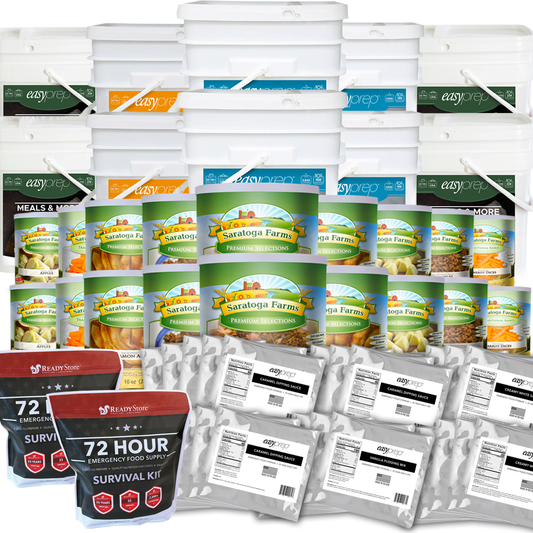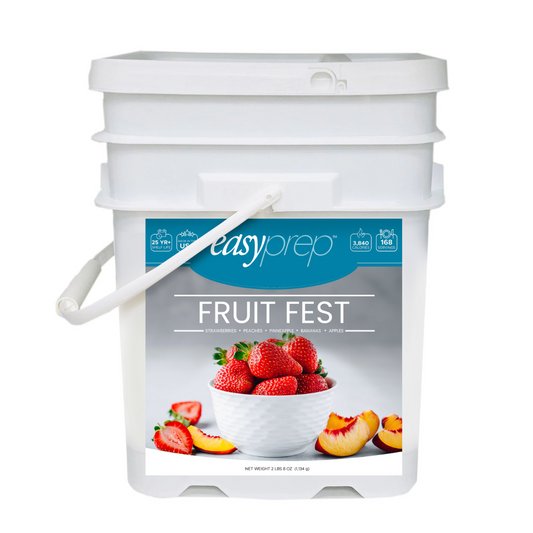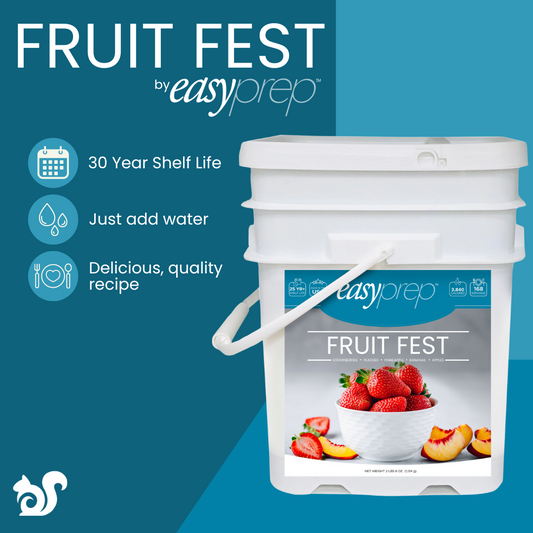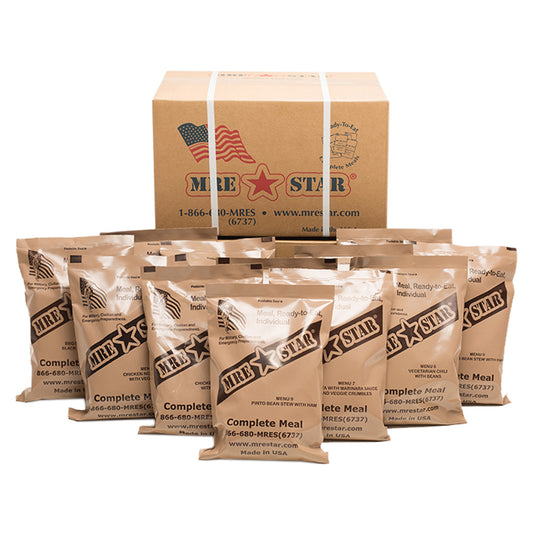How to Build an Emergency Shelter
26 Apr 2014
When you need to find a site to build an emergency shelter, you need to consider a few key elements to ensure your survival. Whenever possible, use existing terrain for shelter – look for hills you can camp between, or caves and overhangs for protection from the elements.
 Energy. First, you have to think about how much time and effort you can spare to build the shelter. You also have to make sure the shelter will give you enough protection from the elements – is it raining, snowing, or windy?
Tools. Next, do you have the tools needed to build that kind of shelter, and if not, can you scavenge or make improvised tools?
Supplies. Finally, you have to consider whether you have the materials necessary to build the shelter. In order to best answer these questions, it’s important to know how to make a few different types of shelters, and what kind of materials you will need to construct them.
Lean-To
This is the most basic type of shelter. While you can build a lean-to with scavenged materials such as tree branches, most survivalists will at least have a poncho or tarp available. You can use a poncho and a length of rope about three yards long to build a lean-to out of a poncho. Find two trees that are between two and three yards apart. Check the wind direction before you choose the location for your lean-to so that you can make sure the back of the structure will be against the wind.
Cut the rope in half. Tie each half to one of the corners of the long side of the tarp or poncho. Attach a stick about a foot long to each rope about two inches away from the corners of the lean-to. These well prevent rainwater from running down the ropes and into the lean-to.
Tie the other ends of the ropes to each of the trees. Spread the poncho or tarp and anchor it in the ground using sharpened sticks. Put the sticks through the grommets on each corner of the poncho, and secure them with a heavy rock placed on top of each one.
Pile brush on either side of the lean-to for further wind and rain protection, and cover the ground with an insulating material like dried leaves or pine needles.
Basic Tent
This is a step up from the lean-to, since it protects you on two sides from the elements. Like the lean-to, it can be constructed with a poncho or tarp. It also has a lower silhouette than a lean-to, making it harder to spot from far away.
To make a basic tent, you will need a poncho or tarp, two ropes about three yards long, six sharpened sticks about two feet long, and two trees about three yards apart.
Tie a 3-foot rope to the center grommets on each side of the poncho or tarp, and secure the other ends of these ropes to each of the trees at about knee height, stretching the poncho or tarp tight. Pull one side of the poncho/tarp tight to the ground and secure it by pushing a sharp stick through the grommets. Secure the sticks with heavy rocks. Repeat this on the other side. As with the lean-to, you can pile debris or equipment at either end of the tent for further insulation from the wind, and scatter leaves or pine needles on the ground.
Dugout Shelter
If there are no trees around that you can secure a rope to for building a lean-to or basic tent, or if you do not have the materials to construct either, you can make the simplest kind of shelter: the dugout shelter. This is, very simply, a hole in the ground, but it’s one that has been designed to provide maximum insulation, comfort, and shelter.
The dugout shelter is useful because it takes minimum time and materials to build. While it is not meant to protect you from the elements for the long-term, it can certainly keep you warm and dry for a night or two, which in a survival situation can sometimes mean the difference between life and death.
Find the right terrain feature for maximum cover: you want to find a depression in the ground that already gives some natural cover. Try to find a depression in higher ground rather than at the bottom of a slope, since you want to avoid water collecting in it.
Clear all of the debris from the depression, saving it for later use. If necessary, dig out some of the depression to create a small hole a bit longer than your height that you can comfortably lie down in. You want the sides of the hole to be higher than your body.
Place large branches and deadwood over the hole to create a roof. Fill in gaps with smaller sticks. Pile leaves and brush on top of this layer. If you are going to need to stay for more than one night, make a few layers of branches, brush, and leaves for added insulation.
Other Types of Emergency Shelters?
What type of emergency shelter do you know how to build? Why would you recommend that one over others? Comment and share with us what the easiest types are to build.
Energy. First, you have to think about how much time and effort you can spare to build the shelter. You also have to make sure the shelter will give you enough protection from the elements – is it raining, snowing, or windy?
Tools. Next, do you have the tools needed to build that kind of shelter, and if not, can you scavenge or make improvised tools?
Supplies. Finally, you have to consider whether you have the materials necessary to build the shelter. In order to best answer these questions, it’s important to know how to make a few different types of shelters, and what kind of materials you will need to construct them.
Lean-To
This is the most basic type of shelter. While you can build a lean-to with scavenged materials such as tree branches, most survivalists will at least have a poncho or tarp available. You can use a poncho and a length of rope about three yards long to build a lean-to out of a poncho. Find two trees that are between two and three yards apart. Check the wind direction before you choose the location for your lean-to so that you can make sure the back of the structure will be against the wind.
Cut the rope in half. Tie each half to one of the corners of the long side of the tarp or poncho. Attach a stick about a foot long to each rope about two inches away from the corners of the lean-to. These well prevent rainwater from running down the ropes and into the lean-to.
Tie the other ends of the ropes to each of the trees. Spread the poncho or tarp and anchor it in the ground using sharpened sticks. Put the sticks through the grommets on each corner of the poncho, and secure them with a heavy rock placed on top of each one.
Pile brush on either side of the lean-to for further wind and rain protection, and cover the ground with an insulating material like dried leaves or pine needles.
Basic Tent
This is a step up from the lean-to, since it protects you on two sides from the elements. Like the lean-to, it can be constructed with a poncho or tarp. It also has a lower silhouette than a lean-to, making it harder to spot from far away.
To make a basic tent, you will need a poncho or tarp, two ropes about three yards long, six sharpened sticks about two feet long, and two trees about three yards apart.
Tie a 3-foot rope to the center grommets on each side of the poncho or tarp, and secure the other ends of these ropes to each of the trees at about knee height, stretching the poncho or tarp tight. Pull one side of the poncho/tarp tight to the ground and secure it by pushing a sharp stick through the grommets. Secure the sticks with heavy rocks. Repeat this on the other side. As with the lean-to, you can pile debris or equipment at either end of the tent for further insulation from the wind, and scatter leaves or pine needles on the ground.
Dugout Shelter
If there are no trees around that you can secure a rope to for building a lean-to or basic tent, or if you do not have the materials to construct either, you can make the simplest kind of shelter: the dugout shelter. This is, very simply, a hole in the ground, but it’s one that has been designed to provide maximum insulation, comfort, and shelter.
The dugout shelter is useful because it takes minimum time and materials to build. While it is not meant to protect you from the elements for the long-term, it can certainly keep you warm and dry for a night or two, which in a survival situation can sometimes mean the difference between life and death.
Find the right terrain feature for maximum cover: you want to find a depression in the ground that already gives some natural cover. Try to find a depression in higher ground rather than at the bottom of a slope, since you want to avoid water collecting in it.
Clear all of the debris from the depression, saving it for later use. If necessary, dig out some of the depression to create a small hole a bit longer than your height that you can comfortably lie down in. You want the sides of the hole to be higher than your body.
Place large branches and deadwood over the hole to create a roof. Fill in gaps with smaller sticks. Pile leaves and brush on top of this layer. If you are going to need to stay for more than one night, make a few layers of branches, brush, and leaves for added insulation.
Other Types of Emergency Shelters?
What type of emergency shelter do you know how to build? Why would you recommend that one over others? Comment and share with us what the easiest types are to build.
 Energy. First, you have to think about how much time and effort you can spare to build the shelter. You also have to make sure the shelter will give you enough protection from the elements – is it raining, snowing, or windy?
Tools. Next, do you have the tools needed to build that kind of shelter, and if not, can you scavenge or make improvised tools?
Supplies. Finally, you have to consider whether you have the materials necessary to build the shelter. In order to best answer these questions, it’s important to know how to make a few different types of shelters, and what kind of materials you will need to construct them.
Lean-To
This is the most basic type of shelter. While you can build a lean-to with scavenged materials such as tree branches, most survivalists will at least have a poncho or tarp available. You can use a poncho and a length of rope about three yards long to build a lean-to out of a poncho. Find two trees that are between two and three yards apart. Check the wind direction before you choose the location for your lean-to so that you can make sure the back of the structure will be against the wind.
Cut the rope in half. Tie each half to one of the corners of the long side of the tarp or poncho. Attach a stick about a foot long to each rope about two inches away from the corners of the lean-to. These well prevent rainwater from running down the ropes and into the lean-to.
Tie the other ends of the ropes to each of the trees. Spread the poncho or tarp and anchor it in the ground using sharpened sticks. Put the sticks through the grommets on each corner of the poncho, and secure them with a heavy rock placed on top of each one.
Pile brush on either side of the lean-to for further wind and rain protection, and cover the ground with an insulating material like dried leaves or pine needles.
Basic Tent
This is a step up from the lean-to, since it protects you on two sides from the elements. Like the lean-to, it can be constructed with a poncho or tarp. It also has a lower silhouette than a lean-to, making it harder to spot from far away.
To make a basic tent, you will need a poncho or tarp, two ropes about three yards long, six sharpened sticks about two feet long, and two trees about three yards apart.
Tie a 3-foot rope to the center grommets on each side of the poncho or tarp, and secure the other ends of these ropes to each of the trees at about knee height, stretching the poncho or tarp tight. Pull one side of the poncho/tarp tight to the ground and secure it by pushing a sharp stick through the grommets. Secure the sticks with heavy rocks. Repeat this on the other side. As with the lean-to, you can pile debris or equipment at either end of the tent for further insulation from the wind, and scatter leaves or pine needles on the ground.
Dugout Shelter
If there are no trees around that you can secure a rope to for building a lean-to or basic tent, or if you do not have the materials to construct either, you can make the simplest kind of shelter: the dugout shelter. This is, very simply, a hole in the ground, but it’s one that has been designed to provide maximum insulation, comfort, and shelter.
The dugout shelter is useful because it takes minimum time and materials to build. While it is not meant to protect you from the elements for the long-term, it can certainly keep you warm and dry for a night or two, which in a survival situation can sometimes mean the difference between life and death.
Find the right terrain feature for maximum cover: you want to find a depression in the ground that already gives some natural cover. Try to find a depression in higher ground rather than at the bottom of a slope, since you want to avoid water collecting in it.
Clear all of the debris from the depression, saving it for later use. If necessary, dig out some of the depression to create a small hole a bit longer than your height that you can comfortably lie down in. You want the sides of the hole to be higher than your body.
Place large branches and deadwood over the hole to create a roof. Fill in gaps with smaller sticks. Pile leaves and brush on top of this layer. If you are going to need to stay for more than one night, make a few layers of branches, brush, and leaves for added insulation.
Other Types of Emergency Shelters?
What type of emergency shelter do you know how to build? Why would you recommend that one over others? Comment and share with us what the easiest types are to build.
Energy. First, you have to think about how much time and effort you can spare to build the shelter. You also have to make sure the shelter will give you enough protection from the elements – is it raining, snowing, or windy?
Tools. Next, do you have the tools needed to build that kind of shelter, and if not, can you scavenge or make improvised tools?
Supplies. Finally, you have to consider whether you have the materials necessary to build the shelter. In order to best answer these questions, it’s important to know how to make a few different types of shelters, and what kind of materials you will need to construct them.
Lean-To
This is the most basic type of shelter. While you can build a lean-to with scavenged materials such as tree branches, most survivalists will at least have a poncho or tarp available. You can use a poncho and a length of rope about three yards long to build a lean-to out of a poncho. Find two trees that are between two and three yards apart. Check the wind direction before you choose the location for your lean-to so that you can make sure the back of the structure will be against the wind.
Cut the rope in half. Tie each half to one of the corners of the long side of the tarp or poncho. Attach a stick about a foot long to each rope about two inches away from the corners of the lean-to. These well prevent rainwater from running down the ropes and into the lean-to.
Tie the other ends of the ropes to each of the trees. Spread the poncho or tarp and anchor it in the ground using sharpened sticks. Put the sticks through the grommets on each corner of the poncho, and secure them with a heavy rock placed on top of each one.
Pile brush on either side of the lean-to for further wind and rain protection, and cover the ground with an insulating material like dried leaves or pine needles.
Basic Tent
This is a step up from the lean-to, since it protects you on two sides from the elements. Like the lean-to, it can be constructed with a poncho or tarp. It also has a lower silhouette than a lean-to, making it harder to spot from far away.
To make a basic tent, you will need a poncho or tarp, two ropes about three yards long, six sharpened sticks about two feet long, and two trees about three yards apart.
Tie a 3-foot rope to the center grommets on each side of the poncho or tarp, and secure the other ends of these ropes to each of the trees at about knee height, stretching the poncho or tarp tight. Pull one side of the poncho/tarp tight to the ground and secure it by pushing a sharp stick through the grommets. Secure the sticks with heavy rocks. Repeat this on the other side. As with the lean-to, you can pile debris or equipment at either end of the tent for further insulation from the wind, and scatter leaves or pine needles on the ground.
Dugout Shelter
If there are no trees around that you can secure a rope to for building a lean-to or basic tent, or if you do not have the materials to construct either, you can make the simplest kind of shelter: the dugout shelter. This is, very simply, a hole in the ground, but it’s one that has been designed to provide maximum insulation, comfort, and shelter.
The dugout shelter is useful because it takes minimum time and materials to build. While it is not meant to protect you from the elements for the long-term, it can certainly keep you warm and dry for a night or two, which in a survival situation can sometimes mean the difference between life and death.
Find the right terrain feature for maximum cover: you want to find a depression in the ground that already gives some natural cover. Try to find a depression in higher ground rather than at the bottom of a slope, since you want to avoid water collecting in it.
Clear all of the debris from the depression, saving it for later use. If necessary, dig out some of the depression to create a small hole a bit longer than your height that you can comfortably lie down in. You want the sides of the hole to be higher than your body.
Place large branches and deadwood over the hole to create a roof. Fill in gaps with smaller sticks. Pile leaves and brush on top of this layer. If you are going to need to stay for more than one night, make a few layers of branches, brush, and leaves for added insulation.
Other Types of Emergency Shelters?
What type of emergency shelter do you know how to build? Why would you recommend that one over others? Comment and share with us what the easiest types are to build.











